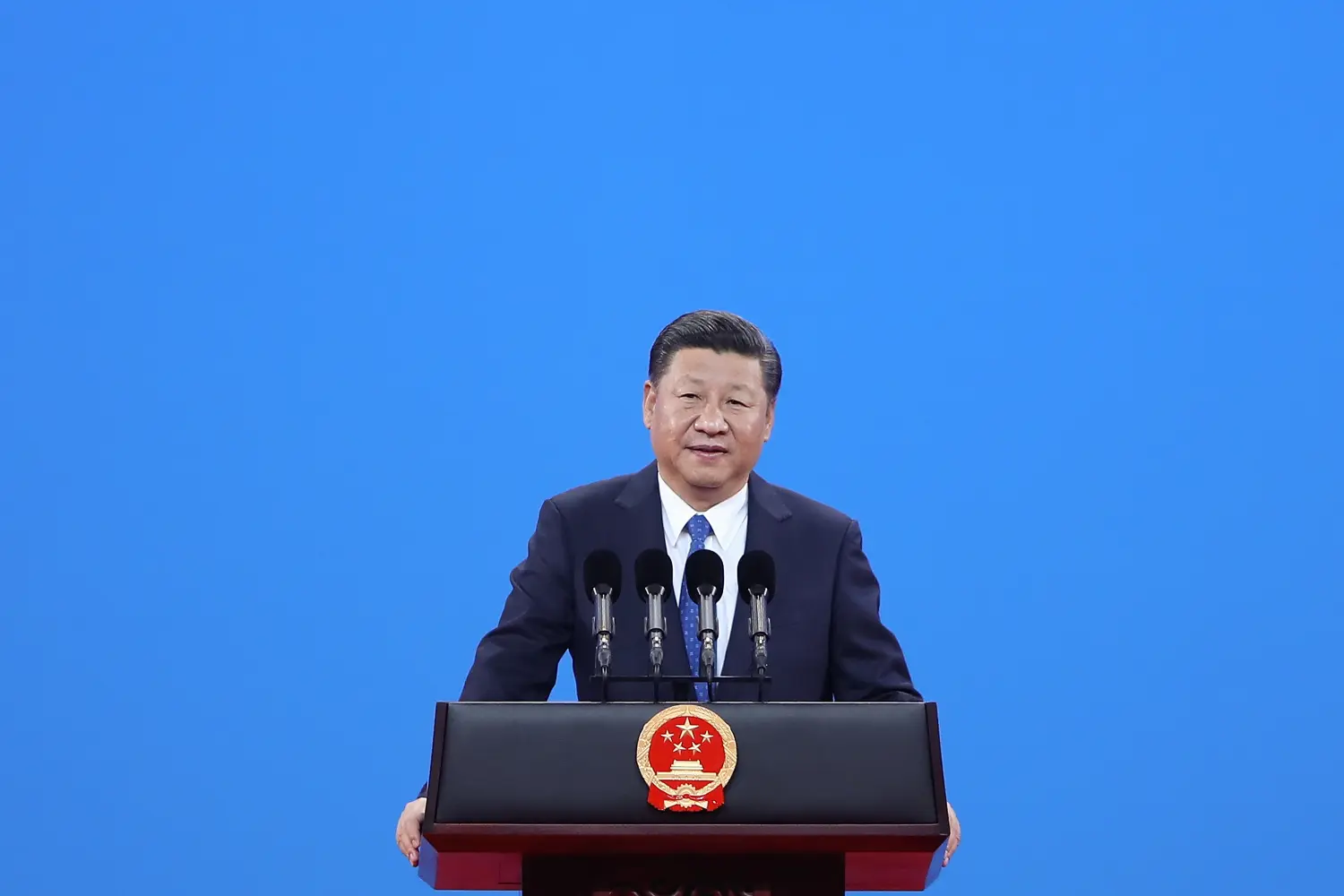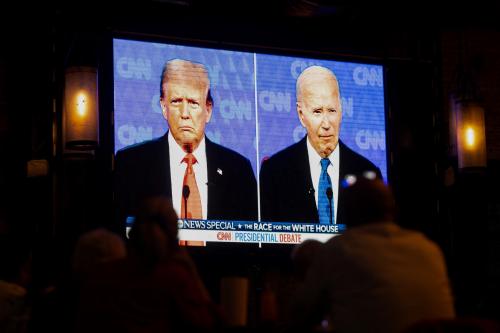 The future of U.S.-China relations has not been so uncertain since before the normalization of relations in 1979. There are acute differences over fundamental issues, ranging from governance models to economic practices to human rights to strategic issues.
The future of U.S.-China relations has not been so uncertain since before the normalization of relations in 1979. There are acute differences over fundamental issues, ranging from governance models to economic practices to human rights to strategic issues.
The Trump administration has identified China as a “revisionist power” and “rival” seeking to “shape a world antithetical to U.S. values and interests” by “displac[ing] the United States … and reorder[ing] the region in its favor.” Reports of China’s efforts to influence public discourse in the United States have drawn growing scrutiny from journalists, academics, Congress, and the counterintelligence and law enforcement communities. The mass incarceration and repression of ethnic minorities in the Xinjiang Uighur Autonomous Region has soured public attitudes toward China. Beijing’s retrenchment on economic reform, and Xi’s calls for the state to play a larger role in the economy, has alarmed the business community. Aspects of China’s Belt and Road Initiative have led many analysts to conclude that Beijing seeks to establish an illiberal “sphere of influence” in Asia. China’s efforts to tighten societal controls through new legal frameworks and emerging technologies, and to make such capabilities available to other countries, may herald a dawning era of “digital authoritarianism.” These trends have underscored concerns that U.S.-China ideological and “systems” competition may intensify and, in the process, increase friction across the board.
Against this backdrop, many constituencies in the United States, including in the business community, have pushed for taking a tougher approach toward China. Such calls have come from across the political spectrum.
Because this spike in tensions has coincided with Chinese President Xi Jinping’s consolidation of power, many in the United States associate the downturn in relations with Xi. The prevailing narrative in the United States is that President Xi is determined to take China in a new direction, a direction that many experts on China describe as increasingly illiberal at home and aggressive abroad.
This narrative has consequences.
If President Xi and his consolidation of power bear responsibility for increased tensions, political, policy, and business leaders may believe that American pressure needs to be intensified and directed at Xi in particular to compel him to reorient Beijing’s trajectory in a less hostile direction. More generally, they may believe that China’s foreign policy behavior can be shaped in meaningful ways by external pressure or inducement, and that a “pause” in objectionable conduct, if negotiated with Xi, may be enduring.
In the alternative, however, U.S. leaders may conclude that personalities are not the problem, bilateral tensions are structural in nature, and rivalry will be enduring. This could cause some to conclude that there is little reason to hope for more benign relations with Beijing, and instead, significant adjustments to U.S. foreign and economic policies are needed to enable America to compete vigorously over the long-term against an ambitious and aggressive China.
To critically assess President Xi’s role in the breakdown in bilateral relations, we solicited contributions from Brookings colleagues and guest experts from both academia and the policy world.
Asked to address the overarching question of how, and how much, Xi Jinping has shaped the trajectory of Chinese foreign policy, each analyst has examined a particular dimension of China’s policy trajectory under President Xi.
Cheng Li and Jamie Horsley survey domestic legal developments and leadership dynamics that are shaping China’s global influence.
Amidst ongoing debates about whether President Xi Jinping is facing a backlash against his policy transformations at home and abroad, Cheng Li assesses recent domestic political and socioeconomic decisions and concludes that Xi has repositioned himself as a populist leader domestically while overseeing China’s rise as a global power. Xi has drastically changed the composition of the key national and municipal leadership to include many of his confidants; significantly increased the budget to eliminate poverty in inland, rural areas; and generated policy incentives to establish “super megacities.” Li warns against underestimating Xi’s domestic power and the popular support for his foreign policy.
Assessing Xi Jinping’s institutionalization of Chinese Communist Party (CCP) control over the state and legal institutions, Jamie Horsley argues that, while the full impacts are not yet clear, the CCP’s heightened involvement in state governance without corresponding legal accountability is a major shift that may threaten its decades-long effort to foster law-based governance intended to bolster its legitimacy. Moreover, the party’s ambivalence toward law and its continued resort to extra-legal detentions and other coercive measures to deal with perceived enemies — including corruption suspects, activist lawyers, and ethnic minorities in Xinjiang and Tibet — may undermine the reliability of legal commitments and party ambitions at home and abroad.
Rush Doshi observes that high-level consensus among Chinese Communist Party officials on China’s grand strategy predates Xi’s presidency, and that Beijing’s former strategy of “hiding and biding” always had an expiry date because it was contingent on the Party’s assessment of the international balance of power. Several apparently recent developments—including the departure from “hiding and biding,” a focus on power projection, more confident pursuit of territorial interests, and the launch of new international institutions—have clear roots in the tenure of Xi’s predecessor, Hu Jintao. Doshi therefore cautions against attributing China’s external assertiveness to Xi. Rather, the United States needs to build its China strategy with a clear-eyed recognition of China’s longstanding commitment to its current path and the high-level Party consensus that underpins it.
Joseph Torigian, George Yin, and Erin Baggott Carter focus on Xi Jinping’s standing and vulnerabilities within the Chinese Community Party, and the corresponding implications for Chinese foreign policy.
Torigian analyzes Xi’s foreign policy decision-making in comparison to Mao Zedong and Deng Xiaoping, arguing that Xi utilizes formalized decision-making authority, concern among Party elite about political instability, norms of obedience, weak institutions, and other tools to consolidate power over key decisions. He judges it unlikely, although not impossible, that domestic discontent with Xi’s foreign policy alone could call into question Xi’s leadership standing in a fundamental way.
Yin assesses that Xi faces real risks from internal criticism over his handling of China’s economic policies and U.S.-China relations. Xi is therefore unlikely, Yin argues, to pursue a foreign policy of confrontation to stoke nationalism and rally domestic support behind him, in part because doing so would risk galvanizing elite opposition to Xi’s rule. Yin suggests Xi is under pressure to improve relations with the United States, and that a desire by Xi to project competence in management of U.S.-China relations likely will outweigh any concerns about appearing weak by pursuing compromise with President Trump.
Carter, however, argues that recent Chinese leaders constantly court, and balance, elite and public support domestically, and that there is an established pattern of diversionary aggression intended to consolidate public support when financial markets diminish elite support. She assesses that challenges to Xi’s rule from Party elite raise the risk that he will employ diversionary aggression. She identifies factors that distinguish diversionary aggression from revisionist aggression, and encourages U.S. policymakers to respond prudently to the former in order to mitigate risk of escalation that neither side wants.
Andrew Chubb, David Shullman, Audrye Wong, Ketian Zhang, and Abigail Grace analyze Chinese foreign policy in the realms of maritime governance, economic statecraft, non-military coercion, and regional security partnerships, and find significant strategic continuity.
Chubb argues that Xi’s ascent has not significantly altered China’s aggressive consolidation of control over contested territories in the South and East China seas. Beijing has been moving along a consistent trajectory since at least 2006, and its maritime policy is “less susceptible to carrots and sticks than … policymakers believe.” At the same time, Xi has set in motion institutional reforms (such as the amalgamation of four maritime law enforcement agencies into the unified China Coast Guard) that could ultimately enhance China’s ability to further consolidate its claims.
Shullman argues the “main driver” of China’s assertive influence efforts in developing countries is the Chinese Communist Party’s longstanding “obsession with preserving its rule” and a perception of “mounting threats” to Party control. This focus “both predated” and in fact “facilitated Xi’s elevation to power” in 2012. Beijing’s initiatives in the developing world, including its ambitious Belt and Road Initiative, are designed to “prop up [economic] growth and employment,” while also “shaping the information space” in developing countries “to China’s advantage” in order to head off local criticism, prevent challenges to Party ideology, and “legitimize the Party and China’s authoritarian system on the global stage.” Beijing is not only unlikely to alter this strategy in response to “criticism or appeals to universal values”; there is a “good chance” that Chinese leaders will build upon it as they “become even more focused on preserving Party rule in the face of mounting challenges at home.” Shullman therefore urges the United States and its partners to focus on denying Beijing the fruits of its “aggressive approach” by building awareness and resilience in target country institutions, and offering superior alternatives.
Wong observes that economic statecraft long has been a key feature of Chinese foreign policy, even if it has become more ambitious in scope and scale since the global financial crisis in 2008-2009. She finds that China’s economic statecraft has had varying political effectiveness, highlighting how the sometimes subversive effects of China’s projects on recipient countries’ political processes and institutions also produce a backlash in public opinion. Guarding against alarmism or dismissiveness, Wong recommends a balanced evaluation of the impacts of China’s economic activism abroad that accounts for countries’ infrastructure needs and domestic politics. Wong encourages the United States not to “ced[e] the policy initiative to Beijing,” and to instead coordinate with allies and partners to develop alternative infrastructure financing options that contrast favorably in quality and sustainability with Chinese proposals.
Zhang analyzes China’s use of non-military coercion in responding to other countries’ initiatives that Beijing perceives as damaging. Zhang shows a consistent pattern between Beijing’s response to the 2010 award of the Nobel Prize to Chinese dissident Liu Xiaobo, and the 2017 deployment by South Korea of the Terminal High Altitude Area Defense system (in response to heightened missile threats from North Korea). Zhang observes continuity in the tactics Beijing has employed for responding to such challenges, well before Xi assumed the presidency and since. These include economic sanctions on symbolic and visible areas of bilateral trade and visible cut-off of high-level diplomatic engagement. She observes that the primary purpose of such actions is to signal disapproval and to deter similar moves by both the offending country and other countries as well.
Grace argues that Beijing’s ambitions for regional security partnerships predate Xi, but that the increasing depth and breadth of regional security engagement under his leadership amounts to a substantive shift. She concludes that whether the Chinese Communist Party is able to integrate diplomatic, economic, and military levers of national power in consolidating such partnerships will be a key determinant of China’s ability to revise the international system in a manner that supports its own “core interests.”
In sum, on some questions, such as the strength of Xi’s political standing and whether domestic political pressure is likely to cause Xi to pursue diversionary conflict, our contributors disagree. They generally converge, however, on the conclusion that Chinese foreign policy reflects more continuity than change under Xi’s leadership, even if the consolidation of party control is transforming domestic politics and awakened the world to China’s growing global ambitions. Agree or disagree, we hope this compendium spurs further research and analysis on this question, and contributes meaningfully to public policy–and public debate–on the direction of China’s global role.




